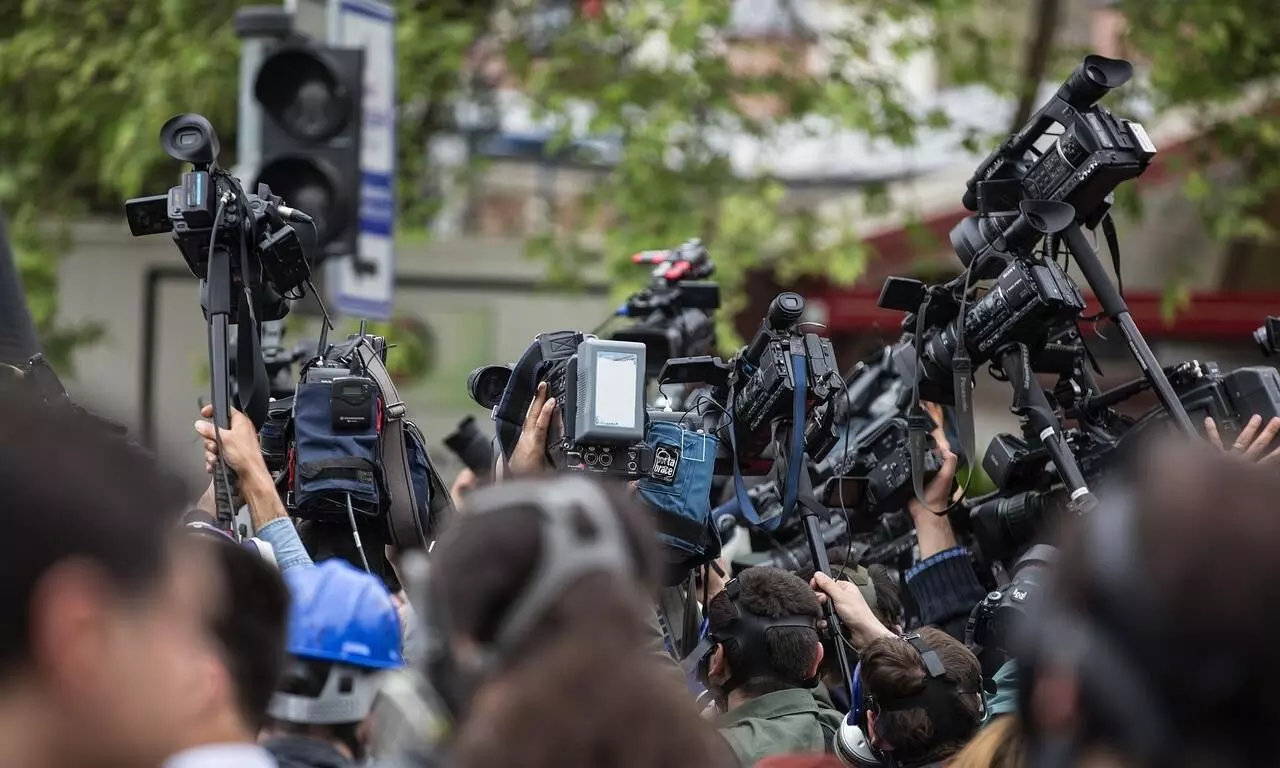
A trial by media begins long before the trial in court
Guwahati, May 2: Media freedom has been deteriorating around the world over the past decade. In some of the most influential democracies in the world, populist leaders have overseen concerted attempts to throttle the independence of the media sector.
While the threats to global media freedom are real and concerning in their own right, their impact on the state of democracy is what makes them truly dangerous. Experience has shown, however, that press freedom can rebound from even lengthy stints of repression when given the opportunity. The basic desire for democratic liberties, including access to honest and fact-based journalism, can never be extinguished.
The fundamental right to seek and disseminate information through an independent press is under attack, and part of the assault has come from an unexpected source. Elected leaders in many democracies, who should be press freedom’s staunchest defenders, have made explicit attempts to silence critical media voices and strengthen outlets that serve up favourable coverage. The trend is linked to a global decline in democracy itself: The erosion of press freedom is both a symptom of and a contributor to the breakdown of other democratic institutions and principles, a fact that makes it especially alarming.
In some of the most influential democracies in the world, large segments of the population are no longer receiving unbiased news and information. This is not because journalists are being thrown in jail, as might occur in authoritarian settings. Instead, the media have fallen prey to more nuanced efforts to throttle their independence.
Common methods include government-backed ownership changes, regulatory and financial pressure, and public denunciations of honest journalists.
Governments have also offered proactive support to friendly outlets through measures such as lucrative state contracts, favourable regulatory decisions, and preferential access to state information. The goal is to make the press serve those in power rather than the public.
India, the world’s most populous democracy, is also sending signals that holding the government accountable is not part of the press’s responsibility. The ruling Bharatiya Janata Party (BJP) has supported campaigns to discourage speech that is “anti-national”, and government-aligned thugs have raided critical journalists’ home and offices. The media have become widely flattering of Prime Minister Narendra Modi, who won reelection, amid allegations that the government issues directives on how the press should cover his activities and intimidate journalists who push back. The government has also been selective in the allocation of television licenses, effectively excluding unfriendly outlets from airwave.
The media industry has been ravaged by the economic crises. Some media, mainly those covering tabloid fare and digitally savvier than others, or those backed by deep-pocketed investors, are surviving or even thriving. But independent journalism outfits, particularly outside the Western world, have either succumbed to financial crisis or are hardly surviving. Government is playing a major role in this problem by unfairly distributing public funding.
An Open Society Foundations (OSF) study found that in 31 out of 55 countries worldwide, the government used state funding to manipulate media.
Regulation, legislation, physical attacks, and threats against journalists or media owners are effective methods used to capture the media. But funding is arguably the most effective method of all.
State advertising is probably the most insidious form of government funding in the media. Governments use money from their own budgets or from state-owned companies to run social media campaigns or advertise products or services offered by the companies they own. In reality, they use this money to basically buy favours from media and journalists.
When news programs on public media criticise authorities, governments slash the budgets of these broadcasters or threaten to freeze their future funding. When ratings of public service media go up and their coverage if laudatory of government policies, authorities beef up funding. When coverage of government is still positive, but audience is down, funding is significantly trimmed.
Most governments in the world use money from the state budget to buy ads in the media. They do that mostly to pay for public service and educational campaigns but also to disseminate information about government policies and decisions in cases of privatisation of companies or tenders for public orders.
Problems related to the unfair distribution of state advertising budgets have been widely documented for decades. State advertising funding is often used to reward media outlets close to or uncritical of state authorities. As the economic crisis ravaged media industries all over the world for nearly a decade now, state advertising has become an even more powerful tool to keep critical media outlets in check.
By stopping purchase of state advertising, authorities can provoke the demise of many media outlets, particularly small, independent ones. When the state is one of the largest ad spenders in a country and media organisations are struggling to survive, state advertising is a lifeline for many of these outlets.
While the threats to global media freedom are real and concerning in their own right, their impact on the state of democracy is what makes them truly dangerous. A free and independent media sector that can keep the population informed and hold leaders to account is as crucial for a strong and sustainable democracy as free and fair elections. Without it, citizens cannot make informed decisions about how they are ruled, and abused of power, which is all but inevitable in any society, cannot be exposed and corrected.
